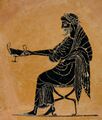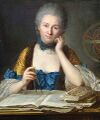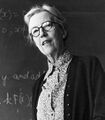Template:Selected anniversaries/December 17: Difference between revisions
No edit summary |
No edit summary |
||
| Line 43: | Line 43: | ||
||1920 – Kenneth E. Iverson, Canadian computer scientist, developed the APL programming language (d. 2004) | ||1920 – Kenneth E. Iverson, Canadian computer scientist, developed the APL programming language (d. 2004) | ||
||Gustav Heinrich Johann Apollon Tammann (d. 17 December 1938) was a prominent chemist-physicist of Estonian and Baltic-German descent who made important contributions in the fields of glassy and solid solutions, heterogeneous equilibria, crystallization, and metallurgy. Pic. | |||
File:Otto Hahn 1970.jpg|link=Otto Hahn (nonfiction)|1938: Physicist [[Otto Hahn (nonfiction)|Otto Hahn]] discovers the nuclear fission of the heavy element uranium, the scientific and technological basis of nuclear energy. | File:Otto Hahn 1970.jpg|link=Otto Hahn (nonfiction)|1938: Physicist [[Otto Hahn (nonfiction)|Otto Hahn]] discovers the nuclear fission of the heavy element uranium, the scientific and technological basis of nuclear energy. | ||
Revision as of 17:36, 26 March 2018
498 BC: Dionysus gives speech which anticipates the coming of Saturnalia.
497 BC: The first Saturnalia festival celebrated in ancient Rome.
1706: Mathematician and physicist Émilie du Châtelet born. She will translate and comment upon on Isaac Newton's Principia Mathematica.
1842: Mathematician and academic Marius Sophus Lie born. He will largely create the theory of continuous symmetry and apply it to the study of geometry and differential equations.
1855: Set theorist and crime-fighter John Venn devotes himself to fighting crimes against mathematical constants.
1900: Mathematician and academic Mary Cartwright born. She will do pioneering work in what will later be called chaos theory.
1907: Lord Kelvin dies. He did much to unify the emerging discipline of physics in its modern form.
1938: Physicist Otto Hahn discovers the nuclear fission of the heavy element uranium, the scientific and technological basis of nuclear energy.
1963: Physicist and crime-fighter Nathan Rosen discovers a new form of Einstein–Rosen bridge which detects and prevents crimes against physical constants.








